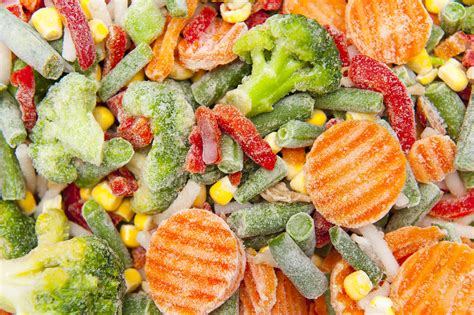average investment > Ensuring the Integrity of Temperature-Sensitive Cargo During Transportation
Ensuring the Integrity of Temperature-Sensitive Cargo During Transportation
The transportation of items that demand precise temperature control is a complex task.
Maintaining the right conditions is essential for preserving the integrity and safety of these products.
This article delves into the key factors and strategies involved in transporting temperature-sensitive items, such as pharmaceuticals, vaccines, tissue samples, and food.
Selecting the Optimal Packaging
Proper packaging serves as the primary defense in safeguarding temperature-sensitive shipments. To ensure that it provides adequate thermal protection and insulation, packaging must undergo validation. Various packaging types are commonly employed for temperature-controlled transport:
- Insulated Containers: Designed for single or repeated use, these containers are constructed from materials like polyurethane foam or vacuum-insulated panels. They often incorporate coolant packs to maintain desired temperatures, keeping the internal environment stable.
- Refrigerant Packaging: This type employs phase-change materials that absorb heat as they melt. It is suitable for shorter-duration shipments, typically lasting around 48-72 hours. These phase-change materials contribute to cooling during transit.
- Insulated Pallet Shippers: These containers are designed for larger, pallet-sized loads. They can utilize polyurethane foam inserts or proprietary composite materials that provide excellent insulation. These shippers ensure stability for larger loads, such as pallets of refrigerated food products. The choice of packaging configuration should align with the expected duration of the shipment, environmental temperatures during transit, and the allowable temperature range of the product. Additionally, protecting against shock and vibration is crucial to prevent damage.
Maintaining the Cold Chain
The “cold chain” denotes the constant temperature control that perishable items like frozen foods, biologics, and chemicals require. Effectively managing the cold chain prevents disruptions that could render products unusable or unsafe. Several elements are essential for maintaining the cold chain:
- Data Loggers: Compact electronic devices included in the packaging to record time and temperature data. They help in monitoring conditions and verifying compliance with the cold chain. Temperature data serves as proof that appropriate temperatures were upheld.
- Refrigerants: These can take the form of gel packs, dry ice, or liquid nitrogen, and they complement insulation by maintaining low temperatures. Having active cooling sources ensures that internal conditions remain regulated.
- Qualified Carriers: Experienced carriers with expertise in handling temperature-sensitive cargo are crucial. They should offer refrigerated trailers, ocean containers, and storage areas to ensure the integrity of the cold chain. Standard operating procedures for handling and loading refrigerated items are also vital.
- Redundancy: Implementing layered packaging and utilizing multiple data loggers or coolant packs adds an extra layer of protection. In case one cooling element fails, backups are in place to prevent temperature excursions. It is imperative to maintain the cold chain through all transportation legs and storage points between the origin and final destination. Vigilance at every handoff is essential to prevent breaks in the cold chain.
Transporting Medical Supplies and Kits
Transporting medical supplies, including vaccines, medications, tissue samples, and devices, demands great care to preserve product efficacy and safety. Typical medical transport kits feature:
- Insulated Boxes: These are specially designed for medical shipments and are validated to maintain temperatures within a few degrees of the setpoint for 48 hours or more. They often include interior compartments to organize payloads.
- Multiple Gel Packs: These can be frozen or refrigerated, providing active cooling. Phase change materials, such as foam bricks, add thermal mass.
- Redundant Data Loggers and Temperature Displays: These enable real-time monitoring and post-transit data review.
- Cushioning: Foam or air packs prevent damage caused by shocks and vibration, while absorbent pads protect against leaks.
- Accessories: Some kits include refrigerants, tape, zip ties, and forms to facilitate packing, shipping, and compliance. These kits are often recyclable or reusable, with instructions on how to recondition refrigerants and coolants after use.
Couriers specializing in medical supplies are experts at properly packing and handling these standardized kits, ensuring the safe transportation of medications, vaccines, specimens, and devices. These supply-chain controls play a crucial role in protecting sensitive payloads.
Controlling Ambient Temperatures
Certain biologics, vaccines, chemicals, and ingredients require precise control over ambient temperatures, typically around 15°C to 25°C (59°F to 77°F). This presents unique challenges compared to freezing products. Solutions for maintaining control over ambient temperatures include:
- Phase Change Materials: These materials can be selected with melting points that align with the target temperature range. As the product temperature rises, the phase change material absorbs heat to cool it down. Conversely, when the temperature falls, it releases heat to warm it up, thus stabilizing conditions.
- Insulated Containers: These provide an ambient temperature environment unaffected by external temperature fluctuations. The insulated walls create an isolated interior environment.
- Heating and Cooling Elements: Such elements can be employed to actively regulate temperatures as needed to maintain the desired range. While this approach requires power, it offers precise control.
- Temperature Monitoring: The use of data loggers is essential to confirm that the ambient temperature is controlled within specified limits throughout the transit.
In designing packaging configurations and transportation plans, it’s imperative to account for seasonal weather changes in the regions being traversed. Carriers should be equipped to provide temperature-controlled trailers, ocean containers, and air freight equipment that align with the ambient temperature range requirements.
Preventing Temperature Excursions
Temperature excursions, referring to out-of-range deviations from the required temperature specifications, can quickly damage sensitive products. Measures to prevent excursions include:
- Packaging Validation: This involves testing packaging configurations in real-world environmental conditions. This helps identify potential points of failure and areas for improvement, guiding design enhancements.
- Dwell Time Limits: Setting limits on how long a product can remain safely outside of controlled conditions offers guidance on operational handling expectations.
- Data Logger Management: Real-time monitoring of temperature variations and tracking dwell times provides visibility to identify process gaps that may be causing issues.
- Redundancy: Backup systems, such as additional cooling elements, help prevent minor issues from escalating into major excursions. Contingency plans should be in place to enable swift action if primary methods fail.
- Personnel Training: Clearly defined standard operating procedures and comprehensive training programs are crucial to prevent mishandling incidents. They emphasize the critical importance of temperature control and motivate diligent handling.
With rigorous cold chain control protocols and robust protective packaging, temperature excursions can be minimized or entirely prevented. However, this requires proactive testing and control measures.
Qualification and Validation Processes
The transportation of temperature-sensitive biologics, pharmaceuticals, and medical devices calls for a regulated and procedural approach. Key validation and qualification processes include:
- Design, Installation, and Operational Qualification (DQ, IQ, OQ): These processes verify that equipment and systems meet specifications, ensuring that the packaging, containers, and cooling elements align with their intended use.
- Thermal Mapping: This involves testing temperature distribution within shipping containers to identify hot and cold spots. The insights gained allow for optimized component placement to enhance stability.
- Shock and Vibration Testing: Simulating transit hazards like drops, shocks, and vibration verifies that the packaging provides robust protection against damage.
- Gap Analysis: This involves comparing the required storage conditions to the actual temperature range during transit. It determines if there are gaps between the specified requirements and real-world performance.
- Repeated Thermal Cycling: This testing simulates worst-case scenarios of shifting external temperatures. It confirms that the packaging consistently performs over an extended duration.
- Standard Operating Procedures (SOPs): These documents detail the proper execution of all processes that impact the product, including handling, loading, transportation, and verification.
- Formal Validation: This comprehensive process provides documented evidence that the packaging design and logistics operations meet the necessary requirements. When executed correctly, it mitigates risks related to product quality. The joint effort of packaging manufacturers and product owners is often required to complete this process.
Harnessing Technology
Recent technological advancements have enabled greater visibility, control, and data-driven decision-making in the field of temperature-sensitive logistics:
- Wireless Sensors and Data Loggers: These compact, cost-effective devices can transmit temperature data in real-time via cellular or GPS connections. This provides live tracking and swift alerts.
- Predictive Analytics: This technology aggregates data from numerous shipments to model risks associated with failure points across various parameters, including shipping lanes, packaging types, and seasonal factors. Machine learning continually refines the analysis.
- Mobile Apps and Web Portals: These platforms give shippers access to temperature and location updates via their smartphones or computer dashboards, facilitating real-time monitoring during transit.
- Smart, Active Packaging: Certain types of packaging can self-regulate temperature and environmental conditions without the need for external power. Integrated micro-components adjust heating or cooling as required.
- Automated Workflow Rules: These can trigger alerts for dwell time limits or temperature deviations exceeding set limits. Configurable systems can prompt corrective actions to prevent cargo from being compromised.
When coupled with robust packaging and procedural controls, technology provides an added layer of safety assurance and intelligence. The data it generates enhances planning and provides greater visibility.
Specialized Services for Medical Items
Transporting critical vaccines, pharmaceuticals, and medical devices demands specialized expertise and meticulous care. Accredited medical couriers offer a range of services to ensure the safe transportation of these vital products:
- Temperature-Controlled Fleet: These couriers operate properly insulated vans equipped with active refrigeration systems to ensure stable and consistent temperatures throughout transit.
- Redundancy: Dual tracking tags and layered packaging serve as fail-safes. In the event of primary cooling failure, backups take over to maintain temperature control.
- Route Planning and Modeling: These services optimize delivery times and account for environmental exposures, helping to avoid unnecessary delays due to factors such as traffic.
- Contingency Plans: These are in place to enable the swift deployment of alternative carriers or equipment. They ensure immediate responses to any shipment failures.
- Real-Time Monitoring: Utilizing telemetry sensors, couriers continuously monitor conditions, with any alerts triggering immediate investigations and responses to prevent the cargo from being compromised.
- Extensive Validation: Medical couriers provide qualification documentation to assure that packaging, handling, and transportation meet the strictest standards, covering IQ, OQ, PQ, and thermal mapping.
To ensure maximum reliability, shippers can entrust their most critical, temperature-sensitive medical items to specialized medical couriers. These couriers possess the capabilities to guarantee that these life-saving products reach their destination intact.
Maintaining the proper temperature conditions is of paramount importance when transporting items like pharmaceuticals, vaccines, chemicals, or food products. With the use of insulated packaging, active cooling mechanisms, data loggers, and stringent procedural controls, the cold chain remains unbroken, ensuring the safe transport of temperature-sensitive cargo. Emerging technologies offer enhanced monitoring, automation, and intelligent insights to further mitigate risks. For highly regulated medical products, accredited specialty couriers provide comprehensive solutions to safeguard these vital items throughout transit. With meticulous planning tailored to the needs of the products in question, the maintenance of appropriate transportation conditions is entirely feasible.




